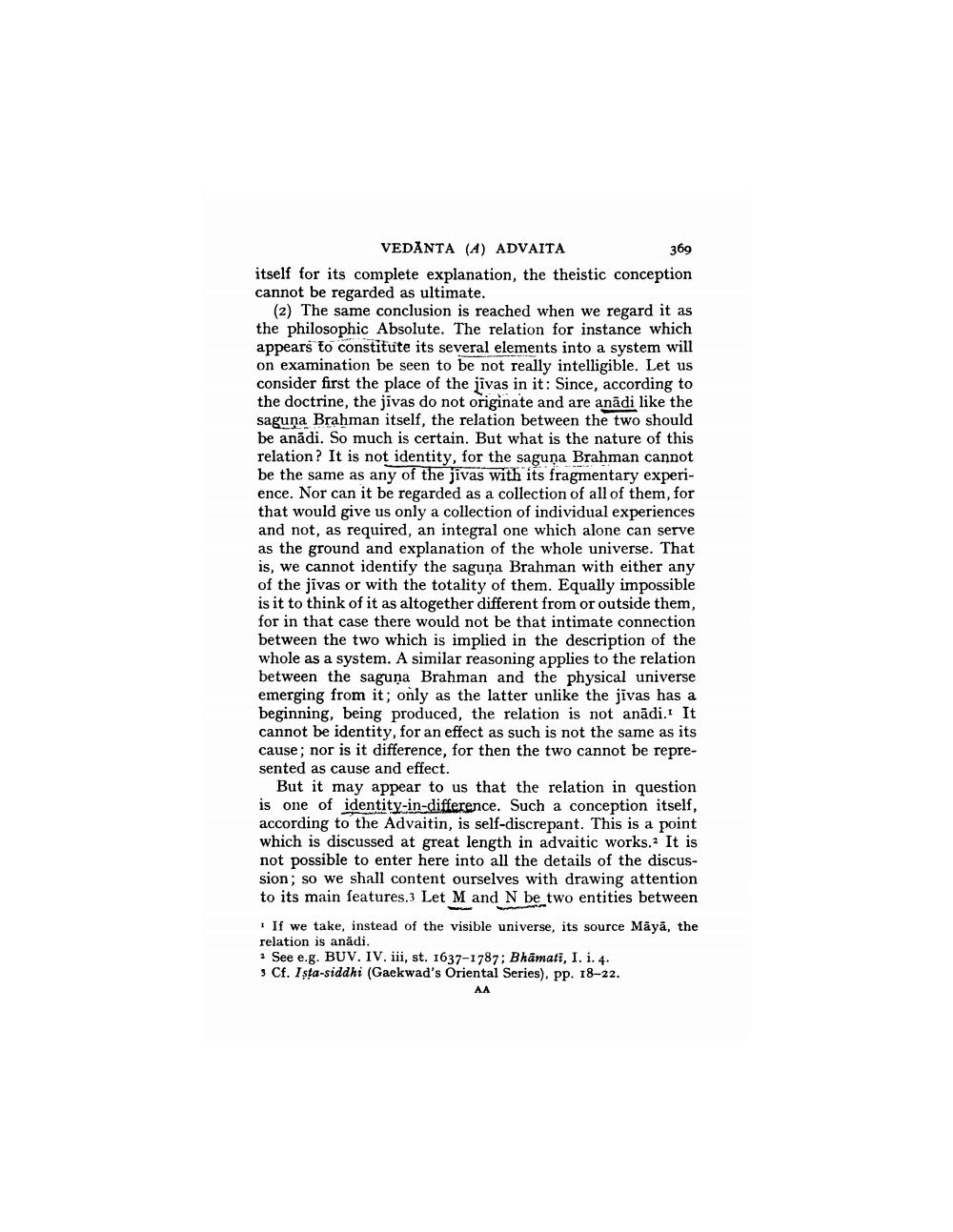________________
VEDANTA (A) ADVAITA
369 itself for its complete explanation, the theistic conception cannot be regarded as ultimate.
(2) The same conclusion is reached when we regard it as the philosophic Absolute. The relation for instance which appears to constitute its several elements into a system will on examination be seen to be not really intelligible. Let us consider first the place of the jīvas in it: Since, according to the doctrine, the jivas do not originate and are anādi like the saguna Brahman itself, the relation between the two should be anādi. So much is certain. But what is the nature of this relation? It is not identity, for the saguna Brahman cannot be the same as any of the jivas with its fragmentary experience. Nor can it be regarded as a collection of all of them, for that would give us only a collection of individual experiences and not, as required, an integral one which alone can serve as the ground and explanation of the whole universe. That is, we cannot identify the saguna Brahman with either any of the jivas or with the totality of them. Equally impossible is it to think of it as altogether different from or outside them, for in that case there would not be that intimate connection between the two which is implied in the description of the whole as a system. A similar reasoning applies to the relation between the saguņa Brahman and the physical universe emerging from it; only as the latter unlike the jivas has a beginning, being produced, the relation is not anādi. It cannot be identity, for an effect as such is not the same as its cause; nor is it difference, for then the two cannot be represented as cause and effect.
But it may appear to us that the relation in question is one of identity-in-difference. Such a conception itself, according to the Advaitin, is self-discrepant. This is a point which is discussed at great length in advaitic works. It is not possible to enter here into all the details of the discussion; so we shall content ourselves with drawing attention to its main features 3 Let M and N be two entities between
If we take, instead of the visible universe, its source Maya, the relation is anādi.
See e.g. BUV. IV. iii, st. 1637-1787; Bhāmati, I. i. 4. 3 Cf. Ista-siddhi (Gaekwad's Oriental Series), pp. 18-22.
ΑΑ




